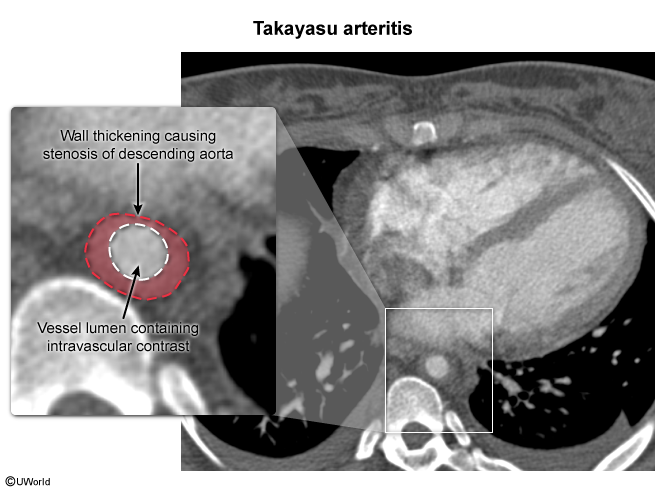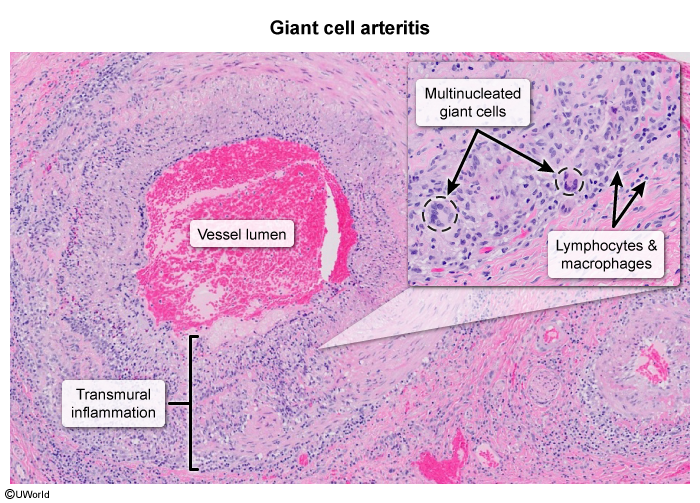Vasculitis: An Overview
Article Sections
Introduction
Vasculitis is characterized by inflammation of blood vessels, leading to end-organ ischemia and dysfunction. There are ~15 distinct vasculitides, which are categorized by the size of vessels involved (large, medium, small, or variable).
General pathophysiology
Despite diverse presentations, all vasculitides feature systemic inflammation and organ dysfunction.
Systemic inflammationPatients typically have constitutional symptoms (eg, fever, malaise, anorexia, nonspecific myalgias) and markedly elevated acute phase markers (eg, erythrocyte sedimentation rate, C-reactive protein).
Organ dysfunctionOrgan injury in vasculitis is primarily due to ischemia. In large vessel vasculitis (eg, giant cell arteritis), major arteries are narrowed from infiltration and inflammatory damage to the vessel wall. Medium vessel vasculitis (eg, Kawasaki disease) can also induce aneurysm formation due to compromised elastic integrity; these can rupture or thrombose, also leading to ischemia. Small vessel vasculitis (eg, granulomatosis with polyangiitis) causes microcirculatory ischemia as well as capillary extravasation (eg, glomerulonephritis, alveolar hemorrhage, cutaneous purpura).
Continue Learning with UWorld
Get the full Vasculitis: An Overview article plus rich visuals, real-world cases, and in-depth insights from medical experts, all available through the UWorld Medical Library.
Images

